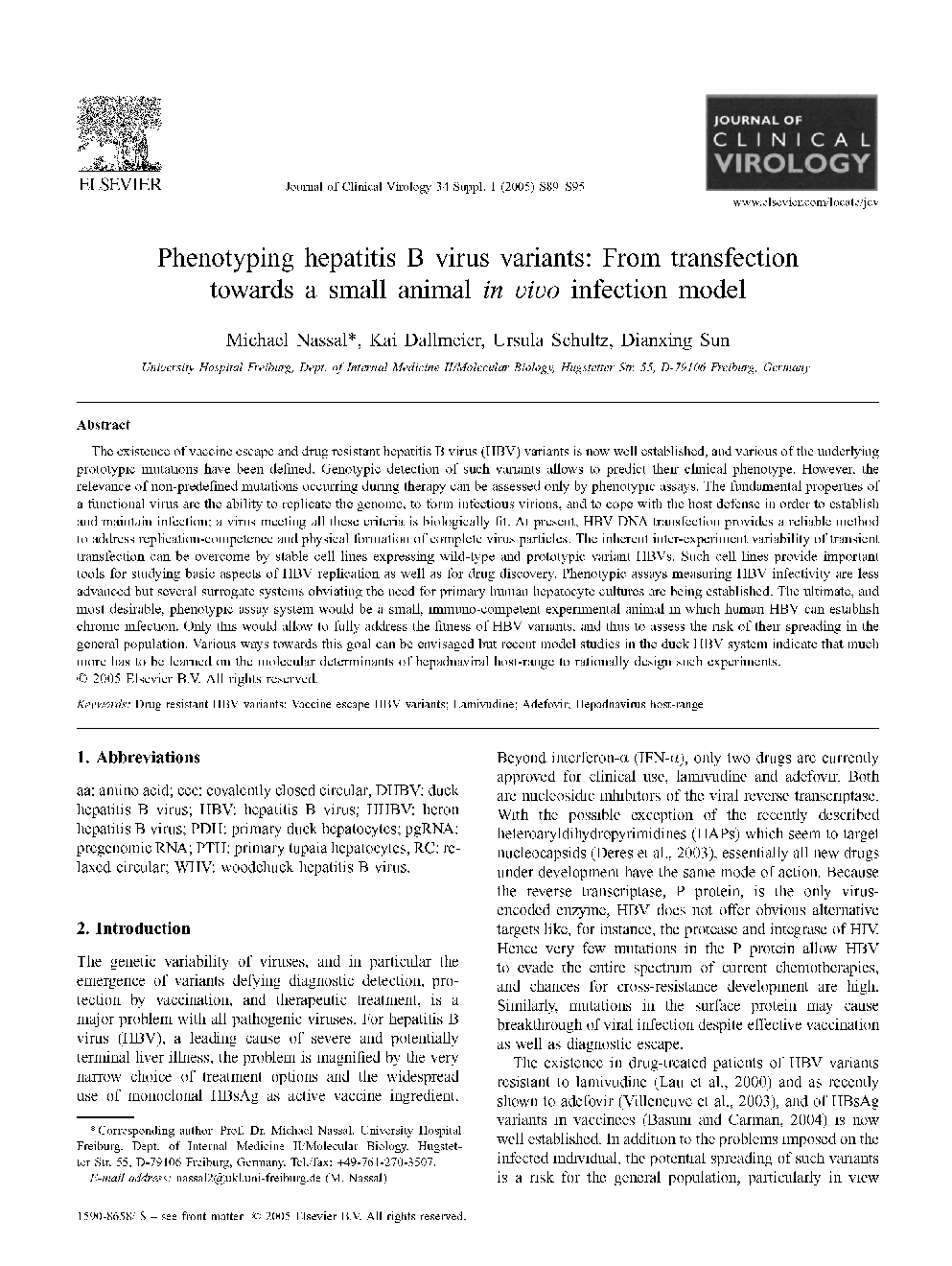| Article ID | Journal | Published Year | Pages | File Type |
|---|---|---|---|---|
| 9268331 | Journal of Clinical Virology | 2005 | 7 Pages |
Abstract
The existence of vaccine escape and drug resistant hepatitis B virus (HBV) variants is now well established, and various of the underlying prototypic mutations have been defined. Genotypic detection of such variants allows to predict their clinical phenotype. However, the relevance of non-predefined mutations occurring during therapy can be assessed only by phenotypic assays. The fundamental properties of a functional virus are the ability to replicate the genome, to form infectious virions, and to cope with the host defense in order to establish and maintain infection; a virus meeting all these criteria is biologically fit. At present, HBV DNA transfection provides a reliable method to address replication-competence and physical formation of complete virus particles. The inherent inter-experiment variability of transient transfection can be overcome by stable cell lines expressing wild-type and prototypic variant HBVs. Such cell lines provide important tools for studying basic aspects of HBV replication as well as for drug discovery. Phenotypic assays measuring HBV infectivity are less advanced but several surrogate systems obviating the need for primary human hepatocyte cultures are being established. The ultimate, and most desirable, phenotypic assay system would be a small, immuno-competent experimental animal in which human HBV can establish chronic infection. Only this would allow to fully address the fitness of HBV variants, and thus to assess the risk of their spreading in the general population. Various ways towards this goal can be envisaged but recent model studies in the duck HBV system indicate that much more has to be learned on the molecular determinants of hepadnaviral host-range to rationally design such experiments.
Keywords
Related Topics
Life Sciences
Immunology and Microbiology
Applied Microbiology and Biotechnology
Authors
Michael Nassal, Kai Dallmeier, Ursula Schultz, Dianxing Sun,
